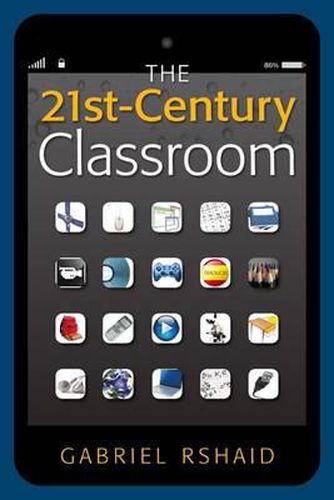Readings Newsletter
Become a Readings Member to make your shopping experience even easier.
Sign in or sign up for free!
You’re not far away from qualifying for FREE standard shipping within Australia
You’ve qualified for FREE standard shipping within Australia
The cart is loading…






The 21st-Century Classroom is a thought-provoking exploration of ways in which we can better prepare our students for the lifelong demands of a world in constant change and full of unprecedented promise. Educators will be inspired to rediscover the most fundamental quality of their mission: to become passionate about sharing learning with students and to inspire a love of today’s limitless learning as a collective and participative endeavor. For the next generations of learners to achieve maximum success, the participative component of learning is not just a desirable trait, but an essential element of an effective 21st-century paradigm of lifelong learning with technology as a powerful catalyst for that learning. Technology has not only minimized the importance of physical proximity but also granted access to all accumulated human knowledge, with new content being generated at a breathtaking pace. Gabriel Rshaid takes readers on an idea-expanding journey, not by providing steps to follow, but instead thoughts, ideas, strategies, and even examples to apply to individual educational environments. He includes explorations of the challenge of change in the school setting, how educators might develop their vision for a 21st-century education, and how learning is now happening differently. He addresses what technology is driving student learning, multimedia and its impact on the written word, and learning through gaming. Common Core State Standards and assessments are discussed from the perspective of needed 21st-century skills, as well as how critical thinking skills are essential to our globalized learning environment. Gabriel Rshaid describes the transition in education: * from learning a fixed curriculum in a classroom to a lifelong learning model; * from a teaching model to a learning model; * from learning content to learning skills; * from learning with a fixed time, space, and access to a teacher to ubiquitous learning; * from using technology for teaching to using technology for learning.
$9.00 standard shipping within Australia
FREE standard shipping within Australia for orders over $100.00
Express & International shipping calculated at checkout
The 21st-Century Classroom is a thought-provoking exploration of ways in which we can better prepare our students for the lifelong demands of a world in constant change and full of unprecedented promise. Educators will be inspired to rediscover the most fundamental quality of their mission: to become passionate about sharing learning with students and to inspire a love of today’s limitless learning as a collective and participative endeavor. For the next generations of learners to achieve maximum success, the participative component of learning is not just a desirable trait, but an essential element of an effective 21st-century paradigm of lifelong learning with technology as a powerful catalyst for that learning. Technology has not only minimized the importance of physical proximity but also granted access to all accumulated human knowledge, with new content being generated at a breathtaking pace. Gabriel Rshaid takes readers on an idea-expanding journey, not by providing steps to follow, but instead thoughts, ideas, strategies, and even examples to apply to individual educational environments. He includes explorations of the challenge of change in the school setting, how educators might develop their vision for a 21st-century education, and how learning is now happening differently. He addresses what technology is driving student learning, multimedia and its impact on the written word, and learning through gaming. Common Core State Standards and assessments are discussed from the perspective of needed 21st-century skills, as well as how critical thinking skills are essential to our globalized learning environment. Gabriel Rshaid describes the transition in education: * from learning a fixed curriculum in a classroom to a lifelong learning model; * from a teaching model to a learning model; * from learning content to learning skills; * from learning with a fixed time, space, and access to a teacher to ubiquitous learning; * from using technology for teaching to using technology for learning.